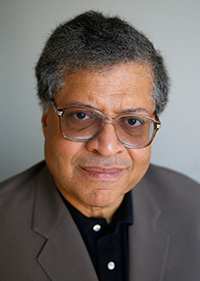Another year for people to hurry along into the dustbin – and the one just ahead doesn’t look at the outset to be much better, at least politically. But culturally at least, 2019 was a whole lot better than one comes to expect in Times Like These. So maybe pessimism about the immediate future is misplaced, though I’m keeping my cards hidden for now. Whatever the future holds, here once again is my own private top-ten of everything that got a rise out of me in the past year. And once again, they are in no particular order:

The Last Black Man in San Francisco – It’s been a long time since I’ve seen a movie three times in the same year, much less have it grow inside my head with each viewing. The first time I saw it, I came away thinking of it as a lyrical, idiosyncratic meditation on the cumulative impact on gentrification and the ways it has, over generations, shattered whatever meaning to be found in the words, “home” and “roots.” The second time I saw it, I listened closer to its dialogue, its depiction of families vulnerable to fault lines of denial, delusion and not-so-benign neglect. For whatever reason, the third viewing brought out in sharp relief the speech by budding playwright Montgomery Allen (Jonathan Majors) about the violent death of a friend and how whole lives, especially those belonging to young black men, are so often put in boxes by others and how it’s left to those young men to break out of those boxes by themselves. It made me think of boxes I’d been forced to occupy and bust open on my own throughout my life and, in the context of Joe Talbot’s debut feature, I started to wonder, with some distress, whether home, or even the desire for home, made up a kind of box that constrains one’s best aspirations. I bet if I watched it for a fourth, fifth and seventh time I’d start thinking of other, different things to unsettle me. No matter how many times I see it, the one line that’ll stay with me belongs, appropriately, to Jimmie Falls, the movie’s star and co-screenwriter, who gently chides a bus-riding sourpuss for bad-mouthing the home town that’s picked him up and slammed him down: “You don’t get to hate it, unless you love it.” Some movies are too small for the thoughts that contain them. But this movie has a soul big enough to set free hundreds of dreams, whether renovated or built from scratch.


Watchmen – “I’m not a Republic serial villain,” Adrian Veidt/Ozymandias insists in the original 1986-87 Alan Moore-Dave Gibbons graphic novel just before he makes millions of heads explode in New York City. Damon Lindelof’s sequel/reinvention for HBO made America’s heads explode by fashioning a harrowing version of a 1940s Republic movie serial spiked with sex, drugs and sociopolitical science. Among the many miracles of this brash and daring venture, the most noteworthy may be how it shares with its source material the way it weaves pulp mythology of costumed vigilantes into an oddly plausible version of 20th century history, leaving us all in pretty much the same sorry, disheartening mess we’re in at the precipice of true-life 2020. On a far less cosmic level, I have along with many others in the Twitter-verse found among many new reasons to love Regina King the way her character says “motherfucker” with the sweep and precision of a nothing-but-net three-pointer.

On The Media – I’ve long stopped watching nightly newscasts and would just as soon skip whatever the 24-hour news cycle has to offer at any given interval. But for the sake of whatever sanity I can maintain when dealing with the awfulness of the present, I never miss WNYC’s inquiry into all things media. Week after week, co-hosts Brooke Gladstone and Bob Garfield, along with their doughty support team of editors and producers, manage, with probing intelligence and gimlet-eyed scrutiny, to get at whatever’s been bothering me about the way things are and – mostly – aren’t covered by what we used to call “the press.” They are the go-to source for slicing and dicing though the smoggy mendacity of the Trump administration and its enablers. They secure your trust by chasing down truth, lies and, most of all, context. It isn’t enough, for instance, to say that the justice system is dysfunctional. So they will give you the historical factors – cultural, political and racial – behind mass incarceration. And not just that issue, but also poverty, climate change, education, foreign policy and housing. The program’s signature achievement in this especially estimable year was its series on “The Scarlet E,” as in “eviction,” one of many stories festering in post-Millennial America that doesn’t get as much attention in the media biosphere as, say, whatever Bill Gates is or isn’t doing with his money – even though they’ve got that covered like a blanket too. More than most of the media it holds accountable, this series fulfills the basic requirement for delivering the news by telling you things you didn’t already know and reminding you of things too important to forget.

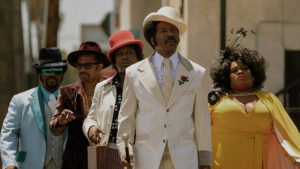
Once Upon a Time…in Hollywood & Dolemite is My Name – If I owned a repertory house or a drive-in, I would make these a double feature that I made sure to exhibit every year (late summer, I think). Though they’re set a few years apart from each other near the hinge of the 1960s and 1970s, both movies appear to be conversing from opposite ends of the culture about a transformative era for American movies. Traditions that were either falling apart or recombining in Quentin Tarantino’s iridescent alternate history of 1969 were pulled from back alley trash compactors by the working-class L.A. schemers and dreamers brought to merry life by director Craig Brewer and screenwriters Scott Alexander and Larry Karaszewski. The reinvention of Rudy Ray Moore (Eddie Murphy in what some keep insisting is a “comeback” even though he’s never really gone away) gives off a giddy vibe of a rags-to-raggedy-ass-riches saga, a kind of lounge-lizard’s version of Up From Slavery with an upraised middle finger goading you to eat its dust. Once Upon a Time…is in a starkly different manner a Pilgrim’s Progress saga, though you’re left wondering at the end whether it’s Leonardo DiCaprio’s has-been TV western hero or Brad Pitt’s deceptively blithe stuntman-handyman who’s made the most progress. Such questions matter more than whatever conclusions some have extracted from Tarantino’s vision – and it is more than anything a vision, whatever you want to make of its depictions of both imaginary and real-life characters.
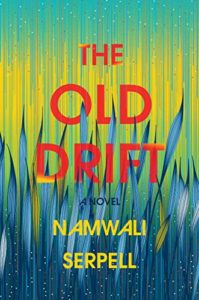
The Old Drift – My favorite novel of the year is best described by its author Namwali Serpell as “the great Zambian novel you didn’t know you were waiting for.” It begins with an implausible accident at the start of the 20th century involving three individuals in a hotel along the Zambezi River in what was then known as the Northwestern Rhodesia territory. The lives of their families – one African, one British, one Italian – are intertwined for what’s left of that century and for several years into the 21st. In between, there are sagas within sagas; some dealing with a woman’s hair that cannot stop growing and whose fallen strands make things grow out of the ground. Another story arc is based on the true-life effort by Zambia’s “Minister of Space Research” to train his newly independent nation’s best and brightest science students to beat both the Russians and Americans to the moon before the end of the 1960s. Eventually the tangled destinies of these and other characters are swept up by a public health calamity referred to here as “The Virus.” Serpell’s novel dares to imagine her native country into a technologically advanced near-future that is at once exhilarating and frightening in its prospects. Add to all this the constant presence of mosquitoes as both a kind of Greek chorus and vigilant corporate godhead and you have a willfully imaginative and (I almost forgot to add) gorgeously written contribution to the shelf of such novels as The Tin Drum, One Hundred Years of Solitude, Midnight’s Children and (wothehell) Adventures of Huckleberry Finn that realize a whole country’s heritage and destiny in a rich, capacious fictional narrative. I also forgot to mention that this is Serpell’s first novel.

Kristen Scott Thomas on Fleabag — There was a lot to love about the second season of Phoebe Waller-Bridge’s universally-acclaimed series, beginning (of course) with Waller-Bridge herself and her bemused, stressed-out and agreeably horny alter-ego stumbling and grappling through her fraught early thirties. I was all in on her Fleabag persona throughout her search for love, even if the approach-avoidance thing with The Priest (Andrew Scott) began to grate for reasons having nothing whatsoever to do with its presumptive “impropriety.” For all its humane and bittersweet wit, the series, for me, glowed brightest in the approximately five minutes Fleabag spends in a bar with Belinda (Thomas), a corporate mogul fleeing a cocktail party in her honor. Over martinis, Belinda gives Fleabag – and us – the gift of her wisdom about things like menopause, why women are better able to deal with pain than men and the categorical imperative to flirt. Never before have I (and, I’m betting, anybody else I know) seen Kristin Scott Thomas so juicy, so fired-up-funny and lit-from-within as she is here. No wonder Fleabag makes a pass at her. We all would. But instead of a tumble, Belinda bestows to Fleabag something more precious by declaring, “People are all we’ve got.” And in case you didn’t hear her, she repeats, “People. Are. All. We’ve. Got.” Much as you don’t want to agree (and almost everything else about the series encourages you not to), you know, deep down, that she’s right about this, along with everything else she’s laying down.

Rolling Thunder Revue: A Bob Dylan Story – A word to those who insist on believing that Martin Scorsese’s meta-mixing of imaginary sidebars to the actual Rolling Thunder tour conducted by Dylan during the Gerald Ford administration is somehow contiguous to the “fake news” ethos abetted by the Right. That word is, to be polite as possible about it, no. The movie states its business at the outset: what else would an old magic trick be doing there? If you can’t tell from jump street that it’s playing fair with its variations on a theme, that’s on you, not on Scorsese and not on Dylan. I may disagree with the latter’s typically gnomic pronouncement that wearing a mask is a means of telling the truth. (As with much else with Dylan, he borrowed that observation from someone else; Oscar Wilde. I believe, in this case.) But the movie’s mischief is nonetheless consistent with a rock music tour whose whole concept was steeped in shadows, disguise and craftiness. Those whoppers with Sharon Stone and Jimmy Carter may rankle the literal-minded. For me, the movie’s willingness to tease at and toy with the parameters of literal and figurative storytelling is far less a concession to the present-day political madness than a provocative means of climbing out of the smog. To elaborate: I remember going to a November 1975 Rolling Thunder gig at the Hartford Civic Center deep in the doldrums of economic blight, especially in down-and-depressed New England, and coming away from the show feeling buoyed and even cross-eyed hopeful about the immediate future. Which is sort of how I felt when this movie was over. I can’t tell you why any more than I could explain my reaction back in the day. It may have something to do with being more open to possibility and risk than to cloistered indignation and fear. Or maybe it has something to do with whatever Allen Ginsberg is telling us all to do at the end of this film: “You who saw it all or who saw flashes and fragments, take from us some example, try and get yourselves together, clean up your act, find your community, pick up on some kind of redemption of your own consciousness, become mindful of your own friends, your own work, your own proper meditation, your own art, your own beauty, go out and make it for your own Eternity.” Now you tell me: what does any of this have to do with whether something is fake-fucking-news or not?

In the Dream House – Imagine a warm-hearted Patricia Highsmith who retains enough delicacy and detachment to train upon herself as well as those around her. But Carmen Maria Machado’s not writing a thriller – or more to the point, she’s not writing just a thriller. Her memoir of a psychologically abusive relationship with another woman inhabits multiple genres and motifs. Its chapter headings conceive segments of this story, by turns, as a “road trip to everywhere,” or “bildungsroman,” “lesbian pulp novel,” “creature feature,” “comedy of errors,” “sci-fi thriller,” “soap opera,” “American gothic” and “stoner comedy.” There are also categories such as “hypochondria,” “dirty laundry,” “word problem,” “queer villainy,” “Chekhov’s gun,” “house in Iowa,” “apartment in Philadelphia,” “second chances” and so on. Maybe you can figure out a narrative of sorts from these clues. But Machado is not only engaging openly and honestly with personal pain, but probing for different ways to articulate it. In the process, she reinvents “memoir” itself as an arena for scholarly speculation, cultural inquiry, links to folklore, fairy tales and even an especially grisly episode of Star Trek: The Next Generation. She is using all her imaginative resources to get to the kind of truth promised, but intermittently achieved in more conventional memoirs. Besides Highsmith, you think of W.G. Sebald and Raymond Queneau and their experiments with narrative and reminiscence. The real thrill one feels in reading In the Dream House is in encountering a means of personal storytelling that is original and, in more ways than one, transformative.

Russian Doll – Nadia (Natasha Lyonne) is a brittle, habitually grouchy New Yorker who’s in a unique rut. She keeps coming to at the same birthday party at a friend’s apartment, leaves and, in some way or another (falling down stairs, struck by a car, blown up by a gas stove, etc.), dies soon after, only to find herself immediately getting ready to leave the same party and the same apartment for yet another “Appointment in Samarra.” So far, so “Groundhog Day.” But this Netflix series is different in many ways, not least because eventually Nadia finds that she’s not the only one going through this. “I die all the time,” a guy named Alan (Charlie Barnett) tells her as the elevator car they’re sharing is about to crash to the ground. So now they’re each other’s chronic-death buddies, roaming the streets of Lower Manhattan in search of clues, patterns, some kind of rational explanation for their shared predicament before one or both of them get killed again. Somehow this feels less like a “Groundhog Day” variation than a post-9-11 version; one where New Yorkers feel stalked and at times overcome by the prospect of death from anywhere, but are somehow more intensely in pursuit of life. What makes this more than a clever conceit is Lyonne’s magnetic presence. As with everything she does, Lyonne combines the brassy tempo of a thirties screwball-comedy heroine with the brainy poise of a fifties TV private eye. She keeps us on the edge of our seats even though we know she’s never really going anywhere. At least, we hope not.
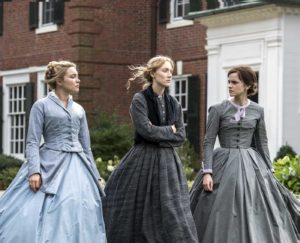
Little Women – Louisa May Alcott’s novel is so durable and well-crafted that it’s next-to-impossible to make a bad movie out of it, even if you were trying hard to do so. The challenge, however, comes in trying to find new ways of telling the story that doesn’t mitigate its power to charm and move its audiences and Greta Gerwig, of whom I said two years ago (Lady Bird) had the stuff to be a great director, has deftly rearranged the March sisters’ saga into fragments that shift back and forth through time. You notice Gerwig’s innovations without being in any way thrown by them and the glue holding these elements together are the uniformly superb performances, perhaps the most subtly remarkable of which is Laura Dern as Marmee, who is at once remote and warm, imperious and giving; able to contain what she concedes is a deep well of anger over her circumstances while wearing her circumspection as though it were her own battle uniform. Gerwig’s film arrives at year’s end like an unexpectedly bountiful gift to her audiences, emotionally accessible, yet quirky in parts, especially in those dance sequences. But Gerwig does love dance and she’s learning how to make her craft move to its own rhythms.
And now, as a public service to at least two people who’ve asked me about it, my own private top-ten movies of the 2010s. Once again, as with the preceding inventory, these are in no particular order. They are also submitted with no additional comment beyond those you’ll (probably) find elsewhere on this site:
Moonlight (Barry Jenkins)
Toni Erdmann (Maren Ade)
Phantom Thread (Paul Thomas Anderson)
Only Lovers Left Alive (Jim Jarmusch)
Mad Max: Glory Road (George Miller)
Get Out (Jordan Peele)
Hell or High Water (David Mackenzie)
Lincoln (Steven Spielberg)
Cold War (Pawel Pawlikowski)
Moonrise Kingdom (Wes Anderson)
BEST DOCUMENTARY: The Act of Killing & O.J.:Made in America (tie).
BEST ANIMATED FEATURE: Spider-Man: Into the Spider Verse & The Shaun the Sheep Movie (tie).
BEST SUPERHERO MOVIE: See directly above.
FILMMAKER OF THE DECADE: Paul Thomas Anderson
I’m not going to say this past year in jazz was stranger than any other. But my list is sure a surprise, at least to me.
I mean…just look at the top five…not just one, but two organ albums? Yes…and not only that, they were both different approaches to jazz organ, having little in common except some righteous tenor sax interaction and all-out commitment from their respective leaders. More on them later.
It makes me remember something told to me back in the 1980s by a very wise man named Jerry Gordon, founder and manager of Philadelphia’s hallowed and still much lamented Third Street Jazz: “There’s no middle ground on organs. People either love them or they don’t.” Jerry would know since Philadelphia has a legitimate claim to being “the jazz organ capital of the world” and indeed, one of the organists on this list has deep Philly roots, deeper even than those of Sun Ra, another organ player who called Philadelphia home and whose massive, unparalleled body of work Jerry would later help curate for Evidence Records.
If anybody occupied Jerry’s nonexistent middle, I was sure it was me, even if I could never avoid such music because as far as my dad was concerned, organ jazz was Dah Joint. This was especially true in the 1960s when he was looking for something to make the rec room jump at odd hours of the night. Jimmy Smith, Jack McDuff, Groove Holmes, Charles Earland, Shirley Scott…those were all his peeps, his boon pals and drinking buddies. Not that I didn’t jump up and down to Jimmy Smith by my own self in those years, but I had so many more outlets for musical comfort and joy. So “love,” as Jerry characterized it, had little to do with it.
Still, as much as Dad would find the basic trappings cozy and familiar, I can’t say for sure whether he’d be able to hang long with these two organ albums. They swing hard, but they also aim high. As much as he liked to jump, Dad likely wouldn’t want to go as high as these two albums. As I say, more on them later.
I suppose that having jazz organ front center aligned somehow with a need I had from jazz and from culture in general to go hard and aim directly at the heart of things. The music that grabbed me the most this past year didn’t dwell on stuff too much, but showed commitment, energy and drive. In plain terms, these albums all followed the ancient bandleader’s imperative to “Hit It!” And that was enough for me.
There was too much else to think about this past year – and also not a whole lot of thinking to go with it. So, if passion was there to be had, my sense of things was that it had better be engaged, tough and above all smart to know where it was going and how it wanted things said and done.
So, let’s hit this!
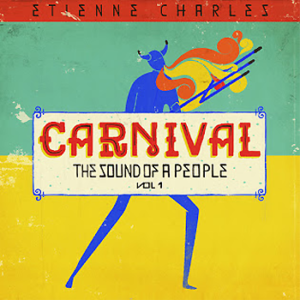
1.) Etienne Charles, Carnival: The Sound of a People, Vol. 1 (Culture Shock) – I like gumbo. No, I don’t. I love gumbo. I especially love it when its ingredients are scraped, plucked, dug up, mashed, dashed and liberally strewn into the pot with seeming abandon, but also – and always – with instincts homed in on what combinations will at once surprise, awaken and enchant the senses. Charles, a trumpet tyro from Trinidad, has made it his business to collect musical seasonings and spices from all over the Caribbean to create mind-body release music redolent of their cultural origins while intent on illuminating the region’s complex history. His previous work, including 2013’s Creole Soul and 2017’s San Jose Suite, gave off rushes and thrills while disclosing the calculation and intelligence behind them. On Charles’ full-bore inquiry into the festival music of his native land, the erudition isn’t as conspicuous, but the eclecticism is. And the rush invigorates from the jump as an on-site recording of Trinidadian street musicians laying down a rollicking, swiveling beat is amped up by some slash-and-burn post-bop inventions of Charles, also saxophonist Brian Hogans pianist James Francies, guitarist Alex Wintz, percussionist D’Achee and drummer Obed Calvaire and others. David Sanchez adds his agile tenor sax to the simmering pot on other tracks and the leader himself kicks in some percussive support, even a cowbell, to the proceedings. This is the enrapturing and beautiful album one long suspected Charles is capable of delivering and maybe the best part of the whole deal is that this is only “Vol. 1.” Here’s my bowl. More, please.

2.) James Carter Organ Trio, Live from Newport Jazz (Blue Note) – It’s been almost twenty years since Carter, a fire-breathing, bottom-voiced avatar of croon-and-holler saxophone, last took a deep dive into the repertoire of gypsy guitar legend Django Reinhardt. And it’s been almost ten years since he’s released an album of any kind. As if to remind us of what we’ve been missing, Carter audaciously re-engages with Reinhardt’s music and brings along his power backup of organist Gerald Gibbs and drummer Alex White. Thus, two raucous traditions – the red-hot “jazz manouche” of 1930s-1940s Parisian bars and the smoky-blue hardbop of 1950s-1960s uptown nightclubs – were in each other’s arms at Carter’s 2018 Newport Jazz Festival appearance and the clinch proved intoxicating, even transformative. Unlike 2000’s Chasin’ the Gypsy, Carter’s not here to pay homage, but to revitalize such Reinhardt chestnuts as “Le Manoir De Mes Reves,” “Anouman” and “Melodie Au Crepuscule” with soulful strutting and hard-rock shouting. The trio opens “Crepuscule” with a grinding vamp borrowed from Bill Withers’ “Use Me,” drawing the crowd to their side and keeping it in their pocket with Gibbs’ spirited riffing and Carter’s bait-and-switch inventions. While Carter can still blow the doors off any nearby building with his sky-scraping honks, bleats and wails, his deep tone on tenor, alto and soprano sax is supple and lustrous at any tempo or altitude. The smoldering, bewitching variations he makes on “Pour Que Ma Vie Demeure” induce both terror and awe and apply a diamond-hard exclamation point to this triumph for Carter, for Newport and for tradition, wherever it can be salvaged and recombined.

3.) Branford Marsalis Quartet, The Secret Between the Shadow and the Soul (Marsalis Music) – Through the years, nay, decades he and his family have held presumptive dominion over the national jazz discourse, Branford has always been my favorite Marsalis grumpy-pants: testy, feisty, dryly funny and brazenly confrontational with his peers over what jazz music really is and what the public really wants from it. Whether in dispute or agreement with his tirades, I’ve often found them livelier than his music, however solidly crafted and polished in presentation. There’s been no doubt that he and his bandmates – pianist Joey Calderazzo, bassist Eric Revis and drummer Justin Faulkner – have as keen a rapport with each other and with their audience as any working combo. But there hasn’t been a full-blown album that evokes what this rapport can achieve at its best. Until now. Something about this one pulls hard on your coat and ramps up the unit’s commitment and drive. Every member brought their A-game for this session to the point where it’s hard to single out, say, Calderazzo’s sweet, steady-rolling changes on his pieces “Cianna” and “Conversations Among The Ruins,” or Revis’ combustible compositions, “Dance of the Evil Toys” and “Nilaste.” Faulkner, the relative newbie in the group, contains and advances the apparatus with a fiercely applied command of weight and balance belying his youth. And the leader seems more locked in than usual, playing with blazing verve and urgency that enhance his habitual ingenuity. To get the full impact of this group’s high-spirited interaction, you need only listen to its exuberant rendition of Keith Jarrett’s “Windup” that, appropriately, brings this set home. Many moons ago, Marsalis showed his drolly churlish side speaking of Jarrett’s own prickly-pear personality, insisting even then that he had nothing whatsoever against Jarrett’s music, proving that even the hardest-shelled curmudgeons can call upon their generosity when properly inspired.
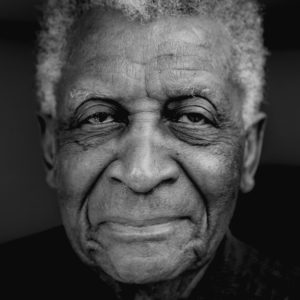
4.) Abdullah Ibrahim, The Balance (Gearbox) – At 85, South Africa’s greatest living jazz artist finds himself deep in the winter of…not discontent exactly, but of wistfulness that stops just short of melancholy. His piano still dances with as much command of space and time as it ever did. But it now takes its time, forsaking much of the whirling-dervish momentum of Ibrahim’s youth with a more deliberate pace that nonetheless resolutely forsakes caution. The sepulchral mood of “Dreamtime” at first throws you off. But as soon as his seven-piece band Ekaya kicks in full gear on “Jabula”, Ibrahim gets frisky enough with the beat to let you know he’s nowhere near ready to slip into the shadows. He remains as open to riding the rugged and unfamiliar in rhythmic combinations as he ever was and as moving as his performance is of “Song for Sathima,” the paean he wrote for his late wife, vocalist Sathima Bea Benjamin, there’s a grand and open-hearted spirit to the recital that envelops multitudes. Now more than ever, it’s possible to hear — and feel — what got Duke Ellington all het up when he first heard the Artist Formerly Known as Dollar Brand (a name he still uses on the cover of this one, though not as prominently).

5.) Joey DeFrancesco, In the Key of the Universe (Mack Avenue) – When I first saw him as a student at Philadelphia’s Settlement Music School, he was still “Joe DeFrancesco” pounding the hell out of an acoustic piano as if his life depended on it. (The kid playing electric bass behind him was then known as “Chris McBride.” As you’ve heard, his grown-up self is likewise better known under another first name.) Joey went on to follow in his dad’s footsteps on the Hammond B-3 and became keeper of the jazz-organ tradition. This album takes his talents to an unexpected direction and, as much as I’d detected way back in his prodigy period, he seems to be going all-out on this one, using all his considerable resources to probe the mystical and spiritual realms explored by African American jazz artists of the late 1960s and early 1970s. He even brought along Pharaoh Sanders, one of the key figures of that movement, to sit in on a couple of tracks, and damned if the 79-year-old Sanders doesn’t sound here as nimble and propulsive as he did in his “Karma” period. (He even takes the late Leon Thomas’ role in singing the lyrics to “The Creator Has a Master Plan.”) DeFrancesco’s regular saxophonist Troy Roberts plays with similar force and grace and it’s always a treat to hear Billy Hart on drums with Sammy Figueroa ably in support on percussion. But as usual, it’s the leader you can’t wait to hear whether he’s vamping and swinging with deceptive ease, comping with dexterity or surging through the changes with near-demonic energy – though on second thought, “near-demonic” (a compound I think I used when I first wrote about him in his middle school days) is an inappropriate characterization for such a spiritually-based enterprise. Bright moments.

6.) Miguel Zenón, Sonero: The Music of Ismael Rivera (Miel) –– Rivera (1931-1987), also known as “Maelo” or “El Sonero Mayor,” was a genius of salsa singing, a master of antiphonal improvisations spinning choruses within, through and above choruses with such groups as Los Cachimbos and Cortijo y su Combo, table-setters for bomba and plena genres. This makes him an inevitable and fertile subject of inquiry for Zenón, who has dedicated himself to framing and extending the motifs to his native land’s pop music with modern jazz motifs. Once again, Zenon, pianist Luis Perdomo, bassist Hans Glawischnig and drummer Henry Cole find fresh, ingenious and uplifting possibilities from their source material without in any way mitigating its subtle graces. Their effervescent interaction is bracing at any pace, whether in the somber dirge “Las Tumbas” or in the rough-and-tumble “El Negro Bembón” with its rapid-fire quintuplets. As effectively as the rhythm section tamps down each eccentric shift in tempo throughout the album, it’s Zenón’s alto saxophone, by turns fiery and elegiac, that most enraptures in conspicuously, appropriately assuming lead vocals.

7.) Steve Lehman Trio with Craig Taborn, The People I Love (PI) – Put an intense maximalist like alto saxophonist Lehman together with a dedicated minimalist like pianist Taborn and you get…well, is “harmony” the word we’re aiming for here? Probably not since the word assumes they meld with their personalities fully intact. Their give-and-take on “In Calam & Ynnus” suggests at the very least a mutual affinity for ripping stuff apart and slamming the distended shapes back together into odd, but logical coherence. Lehman’s facility for rapid-fire riffing is taken up by Taborn, who is willing to fade their discourse out and let Taborn carry the rest of their colloquy home. Here, even more than on his previous albums, Lehman’s bright, bristly tone proves adaptable to a variety of contexts, whether it’s Autechre (“qPlay”) or Kenny Kirkland (“Chance”). He seems most empowered by a burner like Kurt Rosenwinkel’s “A Shifting Design,” where he, Taborn, bassist Matt Brewer and drummer Damion Reid weave into each other’s embroideries so well that you can’t always tell who’s keeping time. (All of them. likely.) This, to me, is the warmest, sunniest album yet from Lehman and, for that matter, from Taborn. Once again, I’m hoping for seconds.

8.) Nicholas Payton, Relaxin’ with Nick (Smoke Sessions) – As a colleague said to me the other day, Payton may not appreciate being on this list at all, given his contempt for the word “jazz.” He prefers the acronym, “BAM” for “Black American Music” to define what he does. As if to drive the point home, the album includes his composition, “Jazz is a Four-Letter Word,” inspired by the title of Max Roach’s unpublished autobiography and if you want to know what he and Payton mean, the late drummer’s recorded voice is there to explain, both in full and in sampled bits. It’s one of the highlights of this two-disc live trio recording, an unvarnished triumph of multi-tasking as the one-time trumpet prodigy proves himself to be a master of acoustic and electronic keyboards, capable of even comping his horn solos, which are as powerful, vibrant and pulsing with narrative energy as ever. (His singing of “Othello” and “When I Fall In Love” isn’t as masterly, but his downy phrasing suggests he’s on to something nonetheless.) One suspects he’d try being his own rhythm section someday. But at least for this laid-back marathon session, he is fortunate to have bassist Peter Washington and drummer Kenny Washington at his back. They’re not related to each other, but share years of veteran savvy, impeccable timing and implacable focus. As with the Marsalises, Payton isn’t shy about courting controversy and he has in like fashion used whatever rancor he arouses as fuel for his forward progress. However you feel about his pugnacity, he’s at peace with it – and you should be, too.

9.) Wadada Leo Smith, Rosa Parks: Pure Love (TUM) – The peerless and, at 77, apparently tireless Smith previously paid tribute to Rosa Parks and the 1955 Montgomery bus boycott seven years earlier in his epochal opus Ten Freedom Summers. He takes what he characterizes as the boycott’s “381 Days of Fire” and unfurls from its core an oratorio in Parks’ honor with seven songs, three singers (Min Xiao-Fen, Carmina Escobar, Karen Parks), a string quartet, a brass trio (including Smith’s trumpet), two percussionists and some electronic sound mixing. Smith also augments this blend with excerpts from recordings he made about fifty years before with fellow “creative music” insurrectionists Anthony Braxton, Leroy Jenkins and Steve McCall. The music may not be “easy,” but its message is elemental: a plea for simple justice in the face of fear and loathing. Not to put too fine a point on this, but given the imperatives of the present day, such a testament would be worth the investment of those who are closest to you – and especially those who aren’t.

10.) Paolo Fresu, Richard Galliano, Jan Lundgren, Mare Nostrum III (ACT) – One of the treasures of European jazz has put out three gorgeous albums in more than a decade and still aren’t as famous as they should be on these shores for emitting some of the most transfixing sounds on the planet. The great Galliano (as I’ve come to call him, mostly because it sounds cool) remains a formidable paragon on the accordion and related gadgets. But what’s become apparent over time is how he’s made his virtuosity merge so seamlessly with Fresu’s plangent horn and Lundgren’s dulcet keyboard. They collectively merge their distinctive voices so as to now seem to speak as one delicate, riveting entity. Both the familiar (“Windmills of Your Mind,” “Love Theme from ‘The Getaway’”) and the not-so-familiar (Lundgren’s “Ronneby,” Galliano’s “Letter to My Mother,” and Fresu’s “Human Requiem”) are rendered in short takes, densely packed with rich melodic invention and tightly contained passion. Some might dismiss it all as “pretty,” but you can pass by “pretty” with ease. These guys make the kind of terrifyingly beautiful music that stops you in your tracks if you’re not careful.
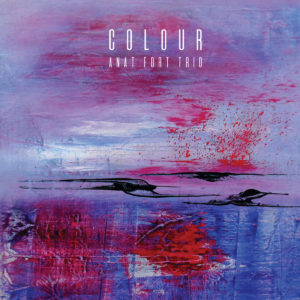
HONORABLE MENTION : Steve Davis, Correlations (Smoke Sessions), Anat Fort Trio, Colour (Sunnyside), Matthew Shipp Trio, Signature (ESP)
Ed Palermo Big Band, A Lousy Day in Harlem (Sky Cat), Anat Cohen Tentet, Triple Helix (Anzic)Toni Freestone Trio, El Mar de Nubes (Whirlwind)
Fabian Almazan Trio, This Land Abounds with Life (Biophilia)

BEST VOCAL ALBUM
Catherine Russell, Alone Together (Dot Time)
HONORABLE MENTION; Annie Addington, “In a Midnight Wind” (Annie Addington)

BEST LATIN ALBUM: Miguel Zenón, Sonero
HONORABLE MENTION: Guillermo Klein & Los Guachos, Cristal (Sunnyside)

BEST HISTORIC ALBUM
Eric Dolphy, Musical Prophet: The Expanded 1963 New York Studio Sessions (Resonance)
Stan Getz, Getz at the Gate: The Stan Getz Quartet Live at the Village Gate, Nov. 26, 1961 (Verve)
Gerald Cleaver & Violet Hour, Live at F1rehouse 12 (Sunnyside)


























